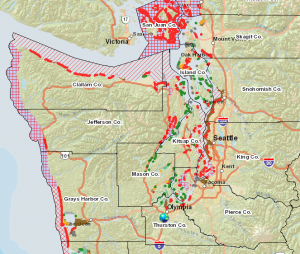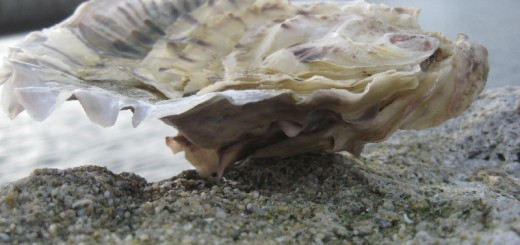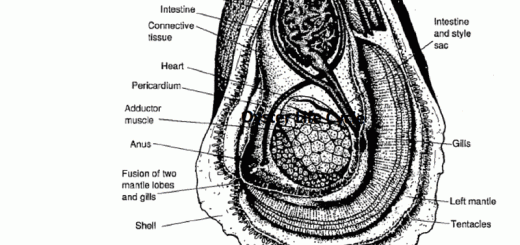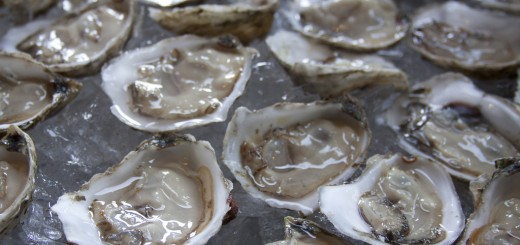Natural History of Oysters
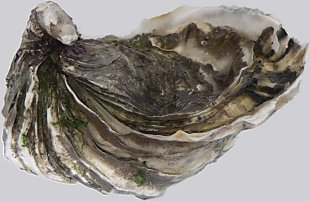
Pacific Oysters, Crassostrea gigas
Written By: Sean Mcgrath, Amber Shirvan, Madeline Cavanaugh, Tai Jordan
Edited By: Madeline Cavanaugh
Life Cycle and Reproduction:
Female pacific oysters release 2 -40 million eggs at one time, pacific oysters broadcast spawn, meaning they release sperm into the sea to fertilize broadcasted eggs. Once and egg is fertilized and the egg becomes a zygote, larvae dispersal occurs. At around 2-8 weeks the tiny oyster is called a spat, they are planktonic and have tiny appendages that it uses to propel itself. Still microscopic at this point 75-300 micrometers (um), the oyster grows a foot to attach itself to a suitable substrate. Once the oyster attaches itself and only doing so once, it reaches sexual maturity at 1 year old and the reproduction process begins again.
Native and Cultivated Geographic Ranges:
They are endemic to Northeast Asia including Japan. They have been cultivated in many other countries countries, “( the UK, France, USA, Canada, Korea, China and New Zealand) for the purpose of aquaculture”. (www.dpi.nsw.gov.au)
Suitable Habitat(s) for Entire life cycle- Temperature, Salinity, Turbidity, Nutrients:
During spawning, water around 75ºF is suitable, with a salinity around 20-35 parts per thousand (PPT), a food source and inter-tidal or sub-tidal waters. Spat need water around the same water salinity and temperature. Adults Pacific oysters can thrive in the inter-tidal, surviving low tides and they can thrive in the sub-tidal waters as well staying submerged up to 3 meters. The sub-tidal oyster are shifted by the currents, this fractures the shell and brings with it cause for repair thus producing a deeper cup and and more biomass in effect. The Oyster is a mollusk are a filter feeder, feeding on plankton (algae).
Life cycle and reproduction, native and cultivated geographic ranges, suitable habitat(s) for entire life cycle- temperature, salinity, turbidity, nutrients.
Major Predators, Parasites or Diseases, and Toxins or Pollutants:
Amber: Danger is everywhere for her, and extermination lurks. She is the prey of many enemies, and must lie immobile as a fungus while the starfish sucks her and the worm bores. Man is the greatest predator since he protects her from the others just to eat her himself (MFK Fisher). Oysters are subject to various diseases which can reduce harvests and severely deplete local populations. Predators such as the starfish will exert pressure on the shells to open them, then once they have an opening they extend their stomachs (out of their mouths) into the shell to engulf and eat the soft tissue of the oyster. The oyster drill which is a small snail about one to two inches long will once they sense they have found a meal begin to drill a hole through the preys shell. The radulas, a muscle with small teeth is then used like a chain saw. It then to eats the soft tissue of the oyster. There are not only predators that eat the oyster but diseases that affect her as well. One of theses diseases is called Dermo a protozoan parasite. Although this disease does not affect humans when eaten it does affect the oyster itself. This disease mostly affects oysters in warmer waters and is a type of fungus that grows on the oyster. It then spreads and causes the oyster population to dissipate. Some oysters also harbor bacterial species which can cause human disease such as cellulitis. Cellulitis can be severe and rapidly spreading and it often requires amputation. This usually happens when the contents of the oyster comes in contact with a cut such as when shucking an oyster. Life is hard, we say. An oysters life is worse. She lives motionless, soundless, her own cold ugly shape her only dissipation, and if she escapes the menace of the duck-slipper-mussel-Black-Drum-leech-sponge-borer-starfish, it is for man to eat, because of mans own hunger. (MFK Fisher)
Propagation Methods and Oyster Harvesting:
There are many different propagation methods for oysters. It can vary by the location and by the farmers. There is one particular form of propagation that is more common among farmers and that is the process we will be looking into today. Many farms start by securing a purchase of seeds or spat. At this point they will take around 250 shells containing approximately 15 spat each, these shells will be placed in a mesh clutch bag that will assist the survival of the oyster. Once the bags are packed, then they will be placed into the water. The areas the bags are placed depend on the environment where the farm is located. Most are placed on inter-tidal flats, at this point the spat is in an area that will facilitate its growth until the time comes for the seeds to be planted in a different area come spring. At the end of the growth period the spat will be close to the size of .25 of an inch. At this point they are separated from the shells so they can be sent to a field (in the water) to continue growing until they reach the desired size. They are delivered to their final spot by dredges that move them in quantities of 500-1000 clutch bags. Once they have grown to a satisfactory size they will be harvested. Large boats will come out during the day and pick up large crates of the matured oyster which they will then take back to their plantations to separate for sales. At low tides they will also send workers with large buckets and shovels to harvest the oysters that scatter the shore which have fallen out of the large crates.
| Oyster | Location Origin | Flavor | Size |
| Pacific | Pacific Coast of Asia | Sweet and salty | Similar to the size of an Olympia |
| Kumamoto | Japan | Sweet, Fruity, Melon | The size of a Pacific |
| Olympia | Puget Sound WA | Briney, salty | Small, the size of a $.50 coin |
